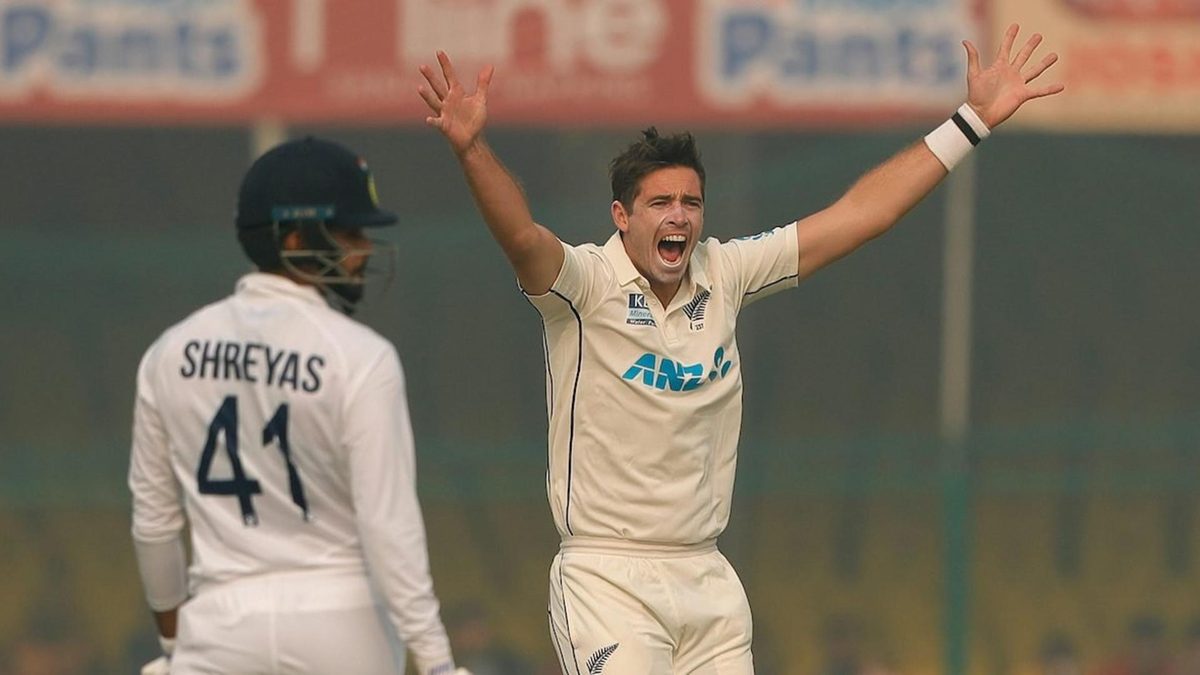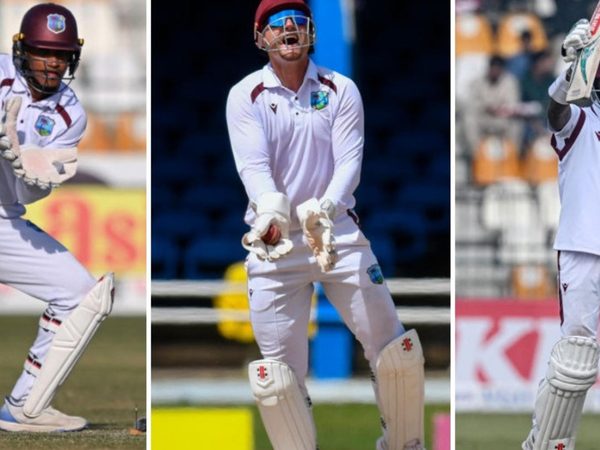
Over the past few years, there has been plenty of debate around who is the premier all-format fast bowler on the planet.
At times, Jasprit Bumrah has seemed a clear favourite. On other occasions, the likes of Kagiso Rabada, Pat Cummins and Trent Boult have been touted as heirs to that crown. Not many, however, have dared to mention Tim Southee in that bracket.
For a lot of cricket-watching folk, Southee remains the understudy to a more illustrious fast-bowling partner (read Boult). Someone who will also act as a link when the fast-bowling baton is to be transferred from Boult to Kyle Jamieson. In recent times, though, there has been enough evidence to suggest that Southee, apart from fulfilling the aforementioned, has actually become the Kiwis’ spearhead.
During the World Test Championship final, there were several instances when New Zealand found themselves under strife. They began patchily after winning the toss and bowling first. However, when push came to shove in the second innings, Southee found an extra gear to blow India out of the water.
On paper, he only bagged five wickets in that game. Yet, each of those wickets were worth their weight in gold. Jamieson (deservedly) hogged the headlines for his final day spell to Cheteshwar Pujara and Virat Kohli. However, it was Southee’s efforts against Rohit Sharma and Shubman Gill the previous evening that laid the foundation.
A couple of months later, Southee rocked up in the UAE, having played the second half of the IPL. But more tellingly, having to plot an unlikely Kiwi romp to the T20 World Cup title. At first, as it usually happens with New Zealand, not many gave them a chance. Southee, though, ensured that the Black Caps only stumbled at the final hurdle.
Before the tournament, Southee, along with his Kiwi peers, was deemed to be one-dimensional. Over the course of the tournament, he put paid to those opinions. He illustrated that he could be so much more than just a pacer who prospers in helpful conditions. In other words, he showed that he could be a genuine match-winner in the shortest format. Southee, in the game against Pakistan, became only the third bowler in history to pick up more than 100 wickets in each format.
Against India at Kanpur, though, the trajectory of his rising stock perhaps attained a little added crescendo. New Zealand assumed their usual role of the scrappy underdog. Almost everyone thought that the Black Caps wouldn’t fold like teams usually do in India. Yet, only a few really felt that they could make a fist of it. Not just because of their batters’ indifferent records in the country, but also because of a dearth of world-class spinners. India’s home record isn’t too shabby either.
Thus, it was fitting that Southee – a bowler expected to only play a holding role – cast himself into the spotlight. He bowled superbly throughout day one (without luck) and then repeated the same processes on day two. Ultimately, he finished with a five-wicket haul and a performance that made many at the ground query – “Are we watching greatness unfold in front of our eyes?”
Among all that, there were a couple of drool-worthy moments. At the start of the day, a few in the commentary box were questioning the ’round the wicket’ angle to Ravindra Jadeja. Southee, though, barely flinched. Deep down, he knew what he was trying to achieve and rather than telling it to people, he provided a perfect illustration by knocking back Jadeja’s stumps. And, he did all of it while nursing a groin strain.
A day earlier, Southee had beautifully crafted Cheteshwar Pujara’s downfall. At the time, the ball wasn’t reversing a lot. Southee angled a few deliveries into Pujara and lulled him into a false sense of security. Then, he bowled a ball that was just close enough to play (from Pujara’s perspective) and far enough to edge.
For a lot of people, this display came as a surprise. Not because of its brilliance but because of the perception that has surrounded Southee. Over the years, he has been looked upon as someone who relishes swinging conditions but isn’t as penetrative elsewhere. His numbers, though, indicate otherwise.
Since the start of 2018, Southee has taken 40 wickets (in eight matches) and averages 19.90 away from home, which includes matches in Australia, England, India, Sri Lanka and the UAE. Of those five venues, four are considered inconducive to swing bowling. In those countries, Southee averages a tick over 17, with his strike rate hovering around 45.
During the same period, Boult averages 28.11 overseas, having picked up only 27 wickets in eight matches. Rabada, meanwhile, has picked up 31 wickets (in nine matches) at an average of 25.77. Cummins has picked up 51 wickets (in nine matches) at an average of 20.41, whereas Bumrah’s corresponding tally is 97 wickets at 22.4 across 22 matches.
As far as overall numbers are concerned, Southee has taken 111 wickets at a handy average of 21.51 since 2018. In that phase, the only other bowler to have taken in excess of 100 wickets at a lower average than Southee is Cummins.
Thus, a case could be made that Southee is perhaps the best Test pacer going. And, to an extent, the premier all-format fast bowler on the planet. The fact that we are still debating his status in the higher echelons is due to the topsy-turvy nature of his career – a career that has seen him labelled as a potential all-time great to someone encountering teething problems in Test cricket. He even enjoyed a renaissance around the 2015 World Cup but that optimism also died down when he was dropped for a home Test against South Africa in 2017.
Well, at least until the past few years. Since then, Southee has made it a point to prove that the initial assumption of being destined for greatness was right all along. Semi-fit or half-way around the world, Southee really does seem a man for all seasons. And, considering how he has fared lately, you might not want to bet against that notion changing as well.








